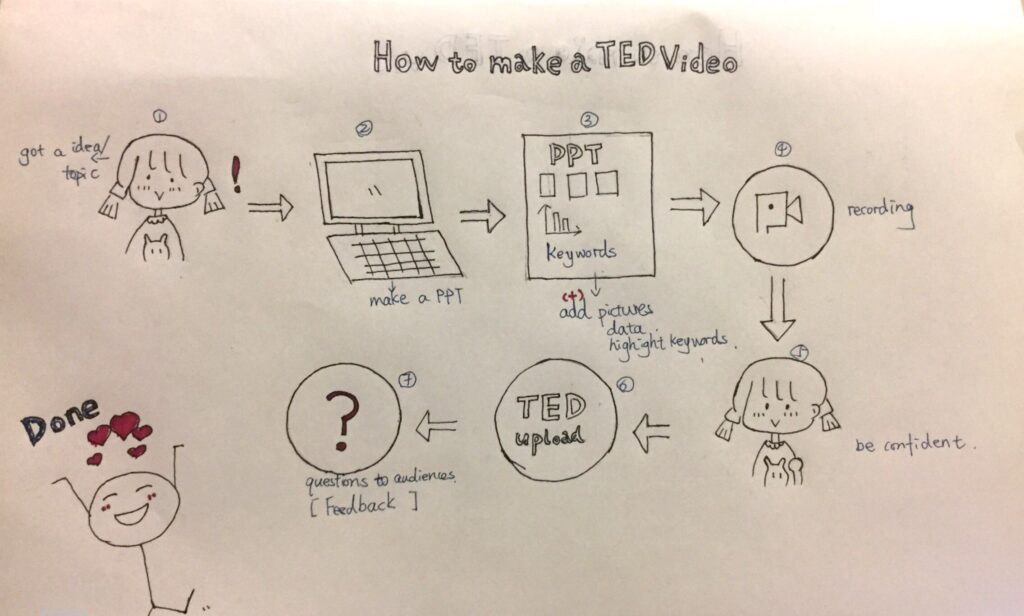In the previous TED blog, I explained a TED video using multimedia learning principles. I want to change the TED video object in this blog because the previous video is not a very typical TED video. Lots of live audiences in the new TED video. I will analyze this TED video in the same way as before.
This is the new TED video:
This video is the most viewed in TED video. This video talks about how procrastination affects our decisions making and lives. In the video, the audience can process information through sight and hearing. For example, the histogram is used in the video to indicate the time allocated to write a paper. Along with the content of the speakers’ narration, the histogram shows the pressure caused by procrastination. This image can help audiences recall the effects of procrastination. This conforms to the dual coding theory.
Procrastination is something almost everyone knows, and the video does not provide deep psychological data and arguments. In the PPT, a lot of pictures and a small amount of highlight text are used. Most of the content is narration by the speaker. The narrative is better than words and can avoid cognitive load theory. Therefore, there is no cognitive load theory.
List some multimedia learning principles are related to this video:
- Modality principle: The learner can more successfully understand the information from the narrative.
- Coherence principle: All the content in this video is related to the topic.
- Segmenting principle: This video details the differences between procrastination or not. It also includes two types of procrastination.
- Feedback principle: Because the audience will laugh or applause because of the speaker, this is the best feedback for the TED video.
- Personalization principle: Audiences can feel as if they are having a conversation, and they will learn better because they try to understand.
TED video does not follow the Embodiment Principle, but this TED video is like a talk show, and the speaker usually needs to mobilize the atmosphere of the scene.
This is my Sketchnoting about making a TED video:
